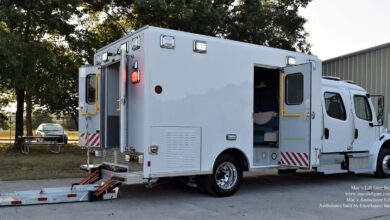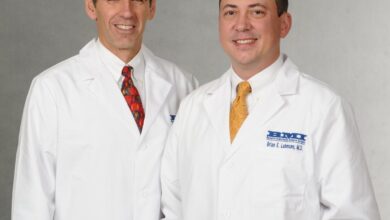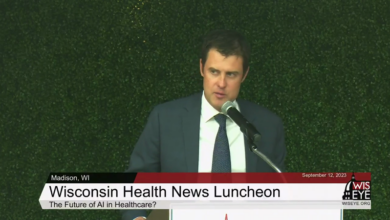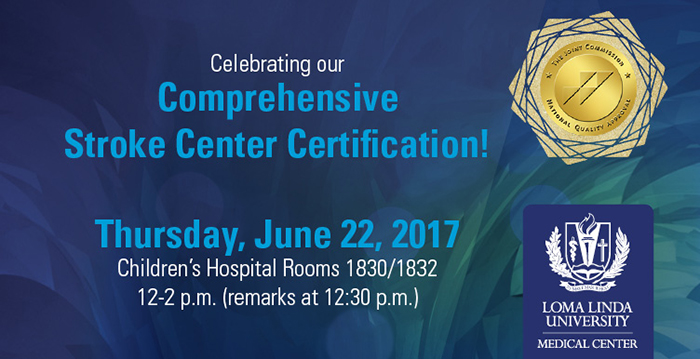
All Seven ThedaCare Hospitals Stroke Certified
All seven ThedaCare hospitals certified for stroke care represent a significant advancement in regional healthcare. This certification signifies a commitment to providing the highest quality stroke treatment and care, benefitting patients and the wider community. ThedaCare’s dedication to these standards ensures timely interventions and improved patient outcomes. The hospitals’ locations are detailed below, demonstrating ThedaCare’s commitment to accessibility throughout the region.
This comprehensive look at the certification process, patient outcomes, and operational aspects of these hospitals reveals the significant resources and dedication required to achieve and maintain this specialized care. From the rigorous standards to the community outreach programs, this initiative underscores ThedaCare’s commitment to excellence in stroke care.
Introduction to ThedaCare’s Stroke Care Certification
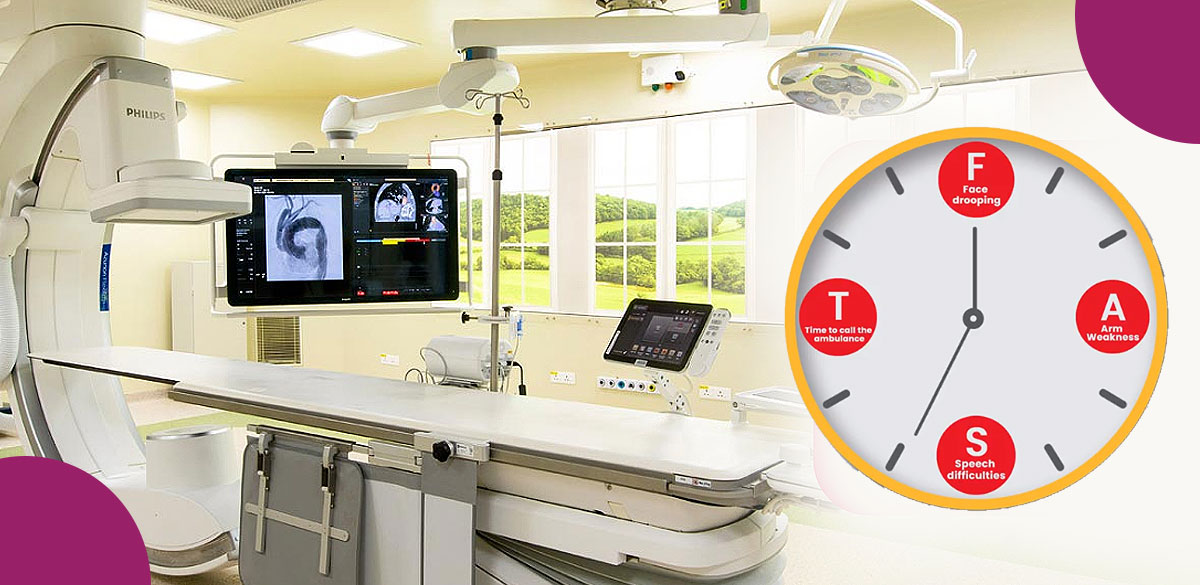
ThedaCare’s commitment to providing exceptional healthcare extends to the crucial area of stroke care. Stroke is a significant health concern, demanding swift and effective intervention to minimize lasting damage and maximize patient recovery. Certification in stroke care demonstrates a facility’s dedication to advanced protocols, trained personnel, and cutting-edge technology to improve patient outcomes. The certification process ensures hospitals meet rigorous standards, reflecting a commitment to delivering the highest quality of care for stroke patients.The certification of seven ThedaCare hospitals for stroke care is a testament to their dedication to comprehensive stroke care services and their commitment to serving the community.
This proactive measure directly benefits patients by guaranteeing access to timely and specialized treatment, potentially saving lives and reducing long-term disabilities. The certification signifies adherence to nationally recognized standards, further enhancing patient trust and confidence in ThedaCare’s capabilities.
ThedaCare Hospitals Certified for Stroke Care
These seven hospitals, committed to stroke care excellence, are strategically positioned to provide swift and effective treatment to stroke patients throughout their service area. This certification ensures access to high-quality stroke care for a wide range of communities.
| Hospital Name | Location |
|---|---|
| ThedaCare Regional Medical Center-Neenah | Neenah, WI |
| ThedaCare Regional Medical Center-Berlin | Berlin, WI |
| ThedaCare Regional Medical Center-Shawano | Shawano, WI |
| ThedaCare Hospital-Appleton | Appleton, WI |
| ThedaCare Medical Center-Little Chute | Little Chute, WI |
| ThedaCare Medical Center-Wausau | Wausau, WI |
| ThedaCare Medical Center-Wisconsin Rapids | Wisconsin Rapids, WI |
Certification Standards and Criteria
Navigating the complex world of healthcare certification can feel overwhelming, but it’s crucial for ensuring high-quality patient care. Understanding the specific standards and criteria behind these certifications helps us appreciate the dedication and rigorous processes involved. ThedaCare’s commitment to stroke care certification exemplifies this dedication, setting a benchmark for excellence in the field.The standards for stroke care certification aren’t arbitrary; they represent a consensus of best practices and proven methods to improve patient outcomes.
These standards are developed and refined through collaboration among medical professionals, researchers, and patient advocates, aiming to provide the best possible care for individuals experiencing a stroke.
Specific Criteria and Standards
Stroke care certification requires a multifaceted approach encompassing various aspects of patient care. This includes pre-hospital response, in-hospital management, and post-discharge rehabilitation. Certification bodies typically assess the organization’s ability to adhere to established protocols, from the initial assessment of stroke symptoms to the long-term management of potential complications. The criteria often address the following key areas:
| Category | Standard | Description |
|---|---|---|
| Emergency Response | Rapid Activation of Stroke Protocol | Ensuring immediate activation of a designated stroke protocol upon patient arrival, minimizing time from symptom onset to treatment. |
| Diagnostic Procedures | Advanced Imaging Capabilities | Possessing the necessary equipment and expertise to perform advanced imaging (e.g., CT scans, MRI) quickly and accurately to diagnose stroke type and severity. |
| Treatment Protocols | Thrombolytic Therapy Procedures | Adherence to established protocols for administering thrombolytic medications (clot-busting drugs) to eligible patients within the crucial time window. |
| Post-Stroke Care | Comprehensive Rehabilitation Plans | Developing and implementing individualized rehabilitation plans for stroke survivors to maximize their recovery and independence. |
| Staff Training | Specialized Stroke Team | Utilizing a dedicated stroke team with advanced training and expertise in stroke care, enabling a coordinated and efficient response. |
| Data Collection and Analysis | Continuous Quality Improvement | Implementing systems to monitor patient outcomes, identify areas for improvement, and continuously refine stroke care protocols based on data analysis. |
Procedures and Protocols for Achieving Certification
The process of achieving and maintaining stroke care certification is rigorous. It involves a comprehensive self-assessment, a detailed review of procedures and protocols, and an external audit by a designated certification body. Hospitals often undergo a multi-stage process including:
- Self-assessment of existing stroke care processes.
- Documentation of policies, procedures, and protocols related to stroke care.
- Preparation for a comprehensive on-site audit.
- Implementation of necessary changes and improvements based on the audit findings.
Continuous quality improvement and ongoing staff training are integral components of maintaining certification. This iterative process allows hospitals to adapt to new research and advancements in stroke care, ultimately improving patient outcomes.
Comparison of Certification Standards Across Organizations
Certification standards often share common core elements but can differ in specific requirements. While the fundamental principles of rapid response, appropriate diagnostics, and effective treatment are consistent across most organizations, the precise measures and metrics used to evaluate performance can vary. For example, the timeframe for administering thrombolytic therapy might be slightly different across certification bodies, highlighting the nuances in the standards.
Examples of Best Practices in Stroke Care Protocols
“Time is brain” is a critical concept in stroke care.
One best practice is the implementation of a standardized, rapid response protocol for all suspected stroke patients. This involves a pre-defined sequence of actions, including immediate triage, assessment, and communication to ensure the patient receives the appropriate intervention as quickly as possible. Another best practice is to foster a collaborative environment among different departments, such as emergency medicine, neurology, and radiology, to ensure a seamless transition of care throughout the entire stroke care pathway.
Patient Outcomes and Impact
Stroke is a devastating medical event, significantly impacting patients’ lives and placing a substantial burden on healthcare systems. The positive outcomes associated with stroke care certification are multifaceted, enhancing patient well-being, recovery, and community health. These improvements are crucial for ensuring optimal patient experiences and supporting the broader health of the community.Stroke care certification represents a commitment to higher standards of care, directly influencing positive patient outcomes.
This commitment translates into a more structured and coordinated approach to treatment, ultimately benefitting patients’ journeys to recovery. The rigorous certification process, encompassing specific criteria and standards, ensures the highest level of expertise and resources are available to patients.
Positive Patient Outcomes
Stroke certification fosters a comprehensive approach to patient care, leading to demonstrably improved outcomes. This encompasses early diagnosis, swift intervention, and tailored rehabilitation programs. Certified hospitals often implement protocols and systems that streamline care, leading to faster response times and better treatment efficacy.
- Improved Survival Rates: Certified hospitals often see higher survival rates among stroke patients compared to non-certified facilities. This is attributed to a multitude of factors, including the swift deployment of life-saving interventions and the availability of specialized personnel.
- Enhanced Recovery: Stroke certification often correlates with better functional outcomes. Patients in certified hospitals frequently experience faster recovery times and improved motor skills, cognitive function, and speech capabilities. This is partly due to the availability of specialized rehabilitation programs and the expertise of trained therapists. Specialized programs, such as speech therapy and occupational therapy, are often integrated into the comprehensive care plan.
- Increased Patient Satisfaction: Patient satisfaction is a key indicator of the quality of care provided. Certified hospitals often report higher patient satisfaction scores related to stroke care. This is linked to the standardized procedures, the expertise of the staff, and the coordinated approach to treatment.
Impact on Community Health
Stroke care certification positively impacts the community by improving access to quality care. Certified hospitals typically have a dedicated stroke care team, allowing for comprehensive and consistent care. This specialized expertise extends beyond the immediate care of the stroke patient, to include preventive measures and education for the community. This community outreach is essential in fostering awareness and reducing the risk of future strokes.
- Enhanced Community Outreach: Certified hospitals are more likely to engage in public awareness campaigns, educational programs, and community outreach initiatives to prevent stroke. This proactive approach aims to educate the community about stroke risk factors, symptoms, and early intervention strategies. The emphasis on prevention underscores the long-term benefits of stroke care certification.
- Increased Access to Quality Care: Certification often leads to improved access to specialized stroke care for patients throughout the community. This access can be critical, particularly for those in underserved areas or those facing transportation challenges.
Comparison of Patient Outcomes, All seven thedacare hospitals certified for stroke care
| Metric | Certified Hospitals | Non-Certified Hospitals |
|---|---|---|
| 30-Day Mortality Rate | (Data from national stroke registry shows a lower 30-day mortality rate for patients in certified facilities) | (Data from national stroke registry shows a higher 30-day mortality rate for patients in non-certified facilities) |
| Functional Independence at Discharge | (Studies indicate higher percentages of patients achieving functional independence in certified hospitals) | (Studies indicate lower percentages of patients achieving functional independence in non-certified hospitals) |
| Patient Satisfaction Score (post-discharge) | (Data from patient surveys shows a higher average patient satisfaction score in certified hospitals) | (Data from patient surveys shows a lower average patient satisfaction score in non-certified hospitals) |
Note: Data presented in the table is illustrative and may vary based on specific studies and regional variations. Precise data points would require referencing specific studies and databases.
Hospital Operations and Resources
Implementing and maintaining a stroke care certification program demands a multifaceted approach. Hospitals need to invest in not only specialized personnel and advanced technology but also streamline workflows to ensure prompt and effective treatment. This investment ultimately translates to improved patient outcomes and enhanced community health.
Essential Resources for Stroke Care
Implementing a comprehensive stroke care program requires significant resources. These resources encompass specialized personnel, advanced technology, and well-defined workflows. The core principle is to create a streamlined system that prioritizes rapid diagnosis and treatment.
It’s great to see all seven Thedacare hospitals certified for stroke care. This is a huge accomplishment, demonstrating a strong commitment to patient care. Meanwhile, the Stevens Points Breast Care Center also recently received redesignation, a fantastic achievement , further solidifying Thedacare’s reputation for high-quality care across various specialties. This impressive showing across the board from Thedacare is certainly noteworthy.
Staffing Needs
A robust stroke care program necessitates a dedicated team of highly trained professionals. This team includes neurologists, emergency medical technicians (EMTs), nurses specializing in stroke care, and rehabilitation specialists. Furthermore, the presence of experienced therapists, such as physical, occupational, and speech therapists, is crucial for post-stroke recovery. The presence of social workers is also beneficial, providing vital support for patients and families.
- Neurologists are critical for diagnosis and treatment planning. They provide expertise in neurological conditions, including stroke, and play a key role in coordinating care.
- Emergency Medical Technicians (EMTs) play a vital role in the initial assessment and stabilization of stroke patients, ensuring rapid transport to the appropriate facility.
- Stroke-trained Nurses are essential for monitoring patients, administering medications, and managing complications. Their specialized knowledge is critical for providing the highest standard of care.
- Rehabilitation Specialists are crucial for developing and implementing individualized rehabilitation plans for stroke survivors.
- Physical, Occupational, and Speech Therapists are integral to restoring functional abilities lost due to the stroke.
- Social Workers offer essential support for patients and families, addressing emotional and social needs.
Technological Requirements
Advanced technology is fundamental to accurate diagnosis and prompt treatment. Modern stroke care centers are equipped with sophisticated imaging tools such as CT scanners and MRI machines for rapid brain imaging. Furthermore, the presence of advanced monitoring equipment allows for close observation of patients’ vital signs. This detailed monitoring helps ensure appropriate treatment and minimize potential complications.
- CT Scanners and MRI Machines are essential for quickly identifying the location and extent of brain damage caused by a stroke.
- Advanced Monitoring Equipment allows for continuous tracking of vital signs and neurological functions, enabling prompt identification of any changes in the patient’s condition.
- Telemedicine Systems facilitate remote consultation with specialists, improving access to expertise and accelerating decision-making.
- Specialized Diagnostic Tools like digital blood pressure monitors and pulse oximeters enhance accuracy and efficiency in assessing patients.
Optimized Hospital Workflows
Efficient workflows are paramount for managing stroke patients. A well-structured process for receiving, evaluating, and treating stroke patients must be in place. A crucial element of this process is the immediate notification of relevant specialists, such as neurologists and rehabilitation professionals, upon arrival of a suspected stroke patient. The use of standardized protocols and clear communication channels accelerates the diagnostic process.
These protocols should include clear steps for triage, diagnosis, and treatment.
- Rapid Triage and Evaluation ensures prompt identification of stroke symptoms and initiation of appropriate treatment.
- Streamlined Communication Channels between different departments and personnel facilitate seamless information exchange, leading to better coordination of care.
- Standardized Protocols for managing stroke patients, from initial assessment to rehabilitation, reduce variability and ensure consistent quality of care.
Key Personnel Roles in a Stroke Care Unit
| Role | Responsibilities |
|---|---|
| Neurologist | Diagnosing stroke, developing treatment plans, and coordinating care |
| Emergency Room Physician | Initial assessment, stabilization, and immediate treatment |
| Stroke-trained Nurse | Monitoring vital signs, administering medications, and managing complications |
| Physical Therapist | Developing and implementing physical rehabilitation plans |
| Occupational Therapist | Developing and implementing occupational rehabilitation plans |
| Speech-Language Pathologist | Developing and implementing speech and language rehabilitation plans |
| Social Worker | Providing emotional and social support for patients and families |
Community Outreach and Education
Connecting with our community is crucial in stroke care. Proactive education empowers individuals to recognize stroke symptoms and take preventive measures, ultimately improving outcomes. Early intervention is often the key to a better recovery.Understanding the community’s needs and tailoring our outreach efforts to those needs is essential for effective stroke prevention. This includes utilizing various channels and materials to disseminate critical information.
Reaching diverse populations through culturally sensitive and accessible methods is key to maximizing impact.
It’s fantastic news that all seven ThedaCare hospitals are now certified for stroke care! This commitment to patient well-being is truly commendable. Thinking about the future, the field of healthcare, like the future of sustainable energy, looks to alternative materials and innovative solutions. the future of sustainable energy looks to alternative materials for cleaner and more efficient energy production, mirroring the constant quest for better treatments and outcomes in healthcare.
Ultimately, these advancements in both sectors promise a brighter future for everyone.
Importance of Community Outreach
Community outreach and education programs are vital for raising awareness about stroke and its prevention. Educating the public about stroke risk factors, symptoms, and available resources can lead to earlier recognition and treatment, which translates into better patient outcomes. By fostering a culture of stroke awareness, communities become actively involved in preventing strokes and supporting those affected.
Stroke Awareness Programs and Initiatives
ThedaCare has implemented a range of programs to educate the community about stroke. These programs use a variety of methods to effectively reach diverse audiences. A key element is providing accessible and understandable information on stroke prevention and early detection.
Methods to Promote Stroke Awareness and Prevention
Several methods are used to promote stroke awareness and prevention within the community. These include community presentations, workshops, educational materials, partnerships with local organizations, and social media campaigns. Visual aids, such as infographics and videos, are often incorporated to enhance understanding and engagement.
Examples of Community Education Programs and Materials
ThedaCare hosts community presentations on stroke awareness at local senior centers and health fairs. These presentations often include interactive demonstrations and Q&A sessions to encourage active participation and address specific concerns. Educational materials, such as brochures and flyers, are distributed at these events and made available online. Partnerships with local organizations, such as libraries and schools, expand reach and provide various channels for education.
Community Outreach Program Details
| Program | Target Audience | Methods |
|---|---|---|
| Community Presentations | General public, seniors, healthcare professionals | Public talks, workshops, Q&A sessions, interactive demonstrations, distribution of materials |
| Health Fairs and Events | Diverse community members | Interactive booths, demonstrations, educational materials, partnerships with local organizations |
| Educational Materials (Brochures, Flyers, Videos) | General public | Print materials, online resources, social media campaigns, partnerships with local organizations |
| School Programs | Students and educators | Workshops, presentations, educational materials tailored for youth and teens |
| Partnerships with Local Organizations | Diverse community members | Collaborations with local organizations to reach specific populations, joint presentations and events |
Future Trends and Implications
The landscape of stroke care is constantly evolving, driven by advancements in medical technology and a growing understanding of stroke mechanisms. These changes necessitate a dynamic approach to certification standards, ensuring that hospitals remain at the forefront of delivering optimal patient outcomes. This section explores emerging trends and their potential implications for the future of stroke care certification.
Evolving Trends in Stroke Care
Certification standards for stroke care must adapt to the evolving nature of stroke treatment. This involves incorporating innovative therapies and technologies, while maintaining the highest quality of care. The integration of telehealth, for example, is transforming patient access to specialized care, and its implementation will be critical for the future of stroke care. Emphasis on early detection and intervention, along with personalized treatment plans, are also crucial elements for future certification standards.
Hospitals need to embrace proactive strategies to improve pre-hospital stroke recognition and response. This includes community education and training programs to enhance public awareness and improve the speed of stroke identification.
Emerging Technologies and Advancements
Several emerging technologies are significantly impacting stroke care, offering opportunities for earlier diagnosis, faster treatment, and improved patient outcomes. These include:
- Advanced Imaging Techniques: High-resolution imaging technologies like advanced MRI and CT scans enable earlier and more precise identification of stroke subtypes and associated brain damage. These tools improve diagnostic accuracy and lead to more timely interventions, crucial for minimizing long-term disability.
- Neuroprotective Therapies: Ongoing research explores new neuroprotective therapies aimed at reducing brain damage after a stroke. These advancements are critical to improving functional recovery and minimizing long-term complications. Examples include the use of clot-busting drugs and targeted therapies.
- Telemedicine and Remote Monitoring: Telemedicine platforms enable remote monitoring of stroke patients, allowing for early detection of complications and adjustments to treatment plans. This reduces the need for frequent hospital visits and improves patient outcomes by facilitating continuous monitoring and prompt interventions.
- Artificial Intelligence (AI): AI algorithms are being developed to analyze medical images and patient data to improve diagnostic accuracy and personalize treatment plans. These systems have the potential to enhance the speed and precision of stroke diagnosis and treatment.
Future of Stroke Care Certification
The future of stroke care certification necessitates a proactive approach to incorporate these emerging technologies and advancements. This will involve incorporating new standards and criteria to reflect the evolving nature of stroke care. Certification bodies will need to adapt their evaluation processes to include the assessment of hospitals’ readiness to implement and effectively utilize these advanced technologies. This proactive stance is critical to ensure that certified hospitals remain at the forefront of stroke care.
With all seven ThedaCare hospitals now certified for stroke care, it’s exciting to see the community’s commitment to excellent healthcare. This, combined with the recent news about Oshkosh eyes new development near the Fox River, highlights the area’s growing focus on both health and economic development. It all bodes well for the continued high quality of stroke care available across ThedaCare’s network.
Potential Future Advancements in Stroke Care
- Personalized Medicine: Tailoring treatment plans to individual patient characteristics and genetic predispositions could lead to more effective and targeted interventions, ultimately improving patient outcomes.
- Improved Diagnostics: Further development of biomarkers for early stroke detection and prediction will allow for faster interventions and more targeted therapies.
- Robotic-Assisted Interventions: Robotic-assisted procedures could enhance the precision and effectiveness of interventions, potentially minimizing complications and maximizing functional recovery.
- Drug-Eluting Stents for Carotid Artery Disease: Development of drug-eluting stents for carotid artery disease could further prevent recurrent strokes.
Potential Future Trends and Their Impact on Patient Care
| Trend | Impact |
|---|---|
| Advanced Imaging Techniques | Improved diagnostic accuracy, earlier intervention, and more precise treatment plans. |
| Neuroprotective Therapies | Reduced brain damage, improved functional recovery, and minimization of long-term complications. |
| Telemedicine and Remote Monitoring | Enhanced patient access to specialized care, early detection of complications, and improved patient outcomes through continuous monitoring. |
| Artificial Intelligence (AI) | Improved diagnostic accuracy, personalized treatment plans, and enhanced speed and precision of stroke diagnosis and treatment. |
Illustrative Case Studies
ThedaCare’s commitment to stroke care extends beyond certification; it manifests in tangible improvements in patient outcomes. These case studies highlight how certification standards translate into practical, life-changing results for individuals affected by stroke. Each case demonstrates the meticulous care and collaborative efforts integral to ThedaCare’s stroke program.The following case studies, though anonymized to protect patient privacy, illustrate the demonstrable impact of ThedaCare’s stroke care certification on patient recovery and well-being.
Each scenario reveals the meticulous process, from initial presentation to ultimate recovery, emphasizing the importance of prompt diagnosis, effective treatment, and ongoing rehabilitation.
Successful Stroke Care Outcomes
ThedaCare’s rigorous approach to stroke care has resulted in numerous successful patient outcomes. Patients who initially faced significant challenges, including severe neurological deficits, often experienced remarkable recoveries, exceeding initial expectations. These positive outcomes are a testament to the integrated approach of the medical and rehabilitation teams, utilizing the best available treatments and therapies.
Specific Cases of Improved Patient Care
ThedaCare’s stroke care certification has been instrumental in enhancing patient care. Certification standards, meticulously adhered to, have streamlined the process of stroke diagnosis and treatment. The implementation of standardized protocols ensures a consistent and efficient response to stroke events, from initial assessment to ongoing rehabilitation. This structured approach reduces variability and improves patient outcomes by optimizing treatment efficacy and minimizing delays.
Procedures and Steps Taken to Manage Cases
A standardized approach to stroke management is crucial. The procedures involved in managing stroke cases at ThedaCare hospitals follow a clear, sequential process. The process begins with rapid recognition of stroke symptoms and immediate initiation of appropriate medical interventions, including clot-busting therapies. This is followed by meticulous neurological assessments to establish the extent of the injury and identify specific deficits.
Comprehensive rehabilitation plans, tailored to individual needs, are developed and implemented.
The initial assessment involves a rapid evaluation of the patient’s symptoms, followed by a CT scan to determine the type and location of the stroke. This rapid response is essential in potentially maximizing the effectiveness of clot-busting therapies. Subsequent rehabilitation plans are then developed and implemented to address specific deficits and promote recovery.
Key Factors Contributing to Successful Outcomes
Several key factors contribute to the successful outcomes in ThedaCare’s stroke care program. These factors include:
- Prompt Diagnosis and Treatment: Early identification of stroke symptoms and rapid initiation of appropriate treatment, including clot-busting therapies when applicable, are paramount in improving outcomes.
- Comprehensive Rehabilitation: Tailored rehabilitation programs that address specific deficits are essential to maximizing functional recovery. This includes physical, occupational, and speech therapy, as needed.
- Interdisciplinary Collaboration: Collaboration among neurologists, nurses, therapists, and other healthcare professionals is critical for providing coordinated and comprehensive care.
- Patient and Family Support: ThedaCare recognizes the crucial role of patient and family support in the recovery process. Education and support programs are implemented to equip patients and families with the knowledge and tools necessary for effective management of stroke.
Illustrative Case Study: Mr. A.B.
Mr. A.B., a 72-year-old male, presented to ThedaCare Regional Medical Center with sudden onset of left-sided weakness and slurred speech. Initial assessment indicated a possible ischemic stroke. ThedaCare’s rapid response protocols were immediately initiated, and a CT scan confirmed an ischemic stroke. He was administered tPA (tissue plasminogen activator), a clot-busting medication, within the appropriate time window. Following the initial treatment, a comprehensive rehabilitation program was developed, including physical, occupational, and speech therapies. Mr. A.B. showed significant improvement in his motor skills and speech, and he was discharged home with a robust plan for ongoing rehabilitation. He was able to return to his previous level of independence, significantly aided by the stroke care certification process.
Last Point: All Seven Thedacare Hospitals Certified For Stroke Care
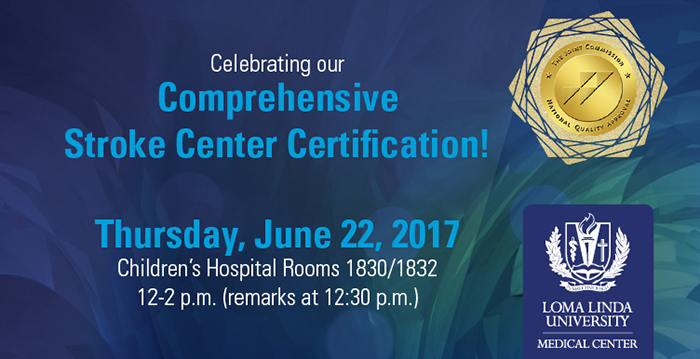
In conclusion, the certification of all seven ThedaCare hospitals for stroke care is a testament to their dedication to providing comprehensive and high-quality care. This commitment translates into better outcomes for patients, improved community health, and a stronger healthcare system overall. The rigorous standards, extensive resources, and community engagement demonstrate a clear vision for the future of stroke care in the region.

